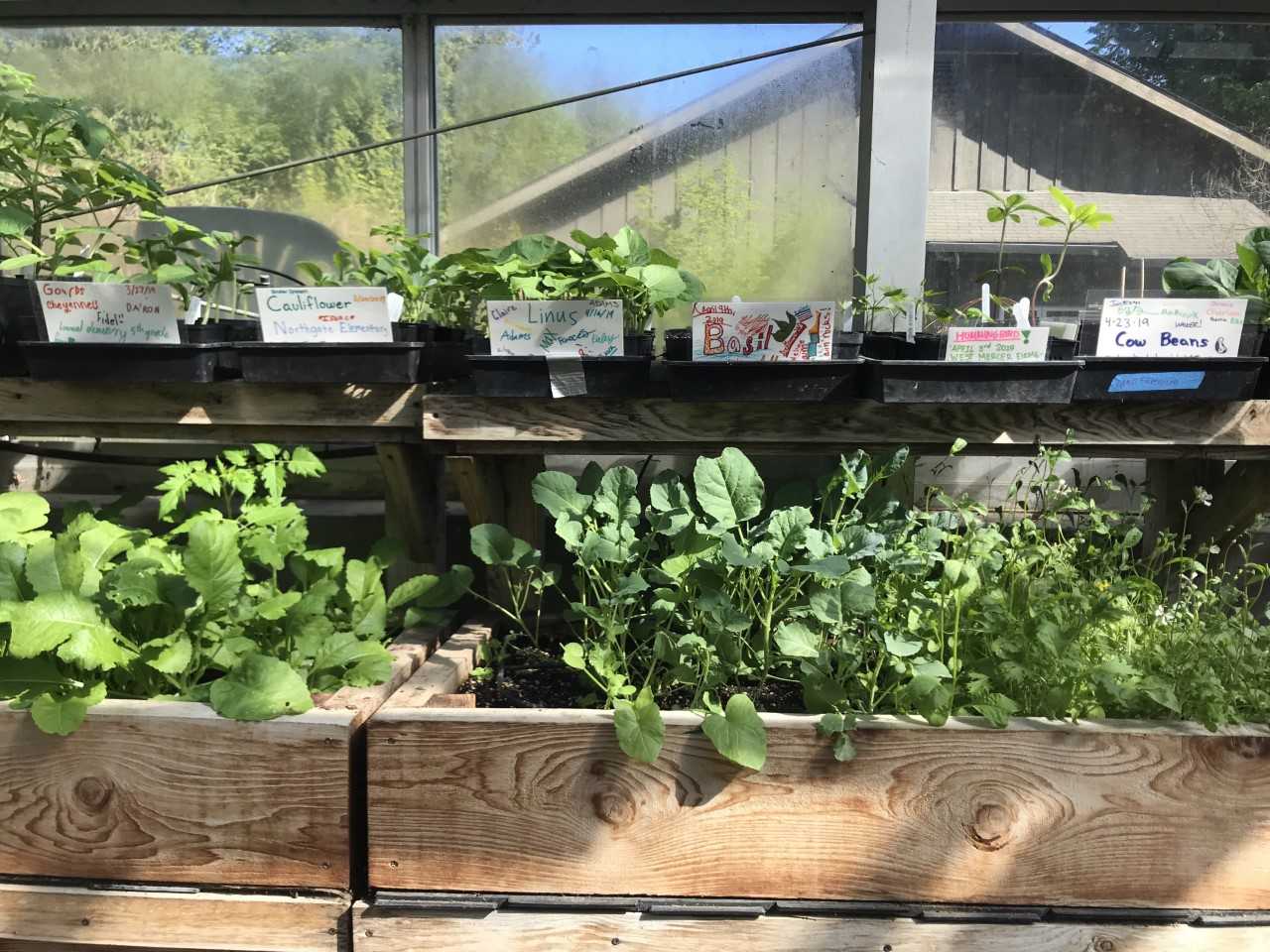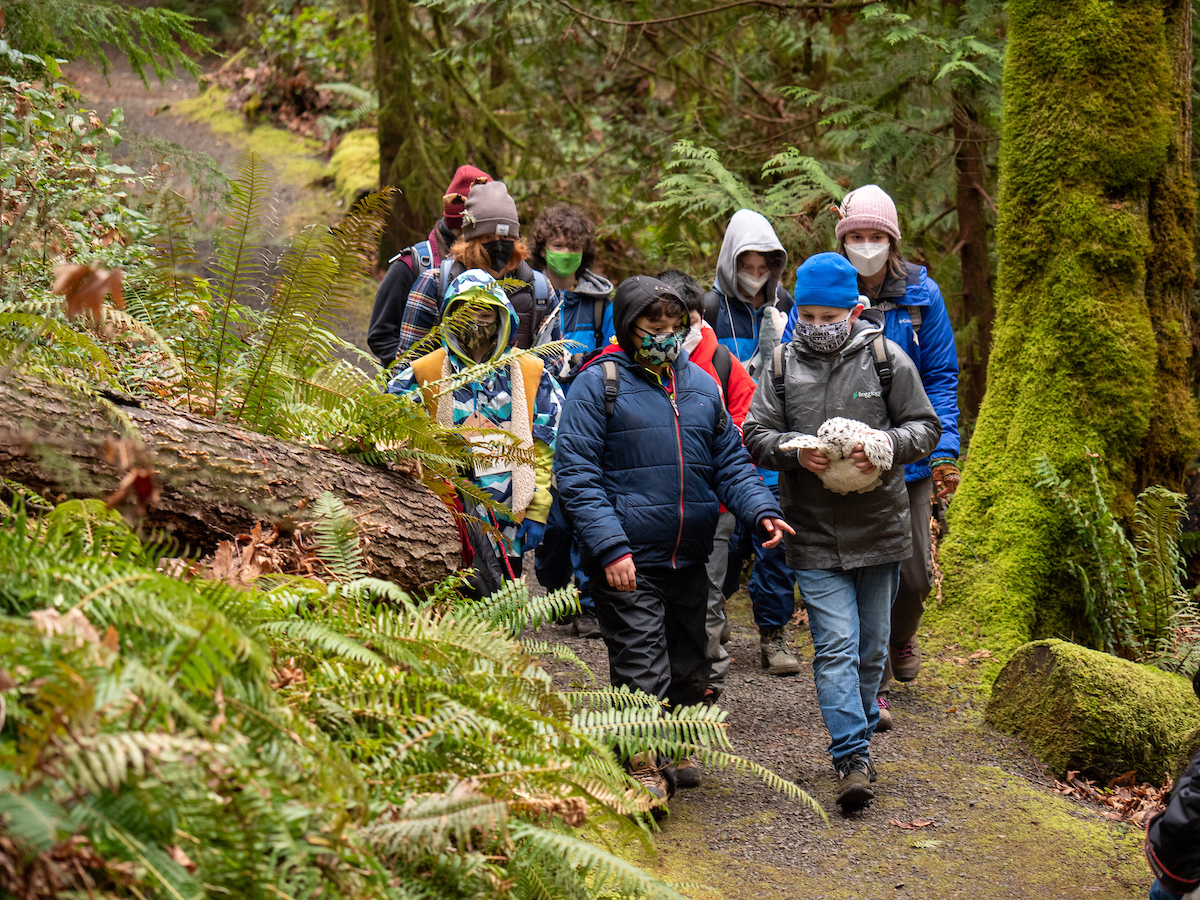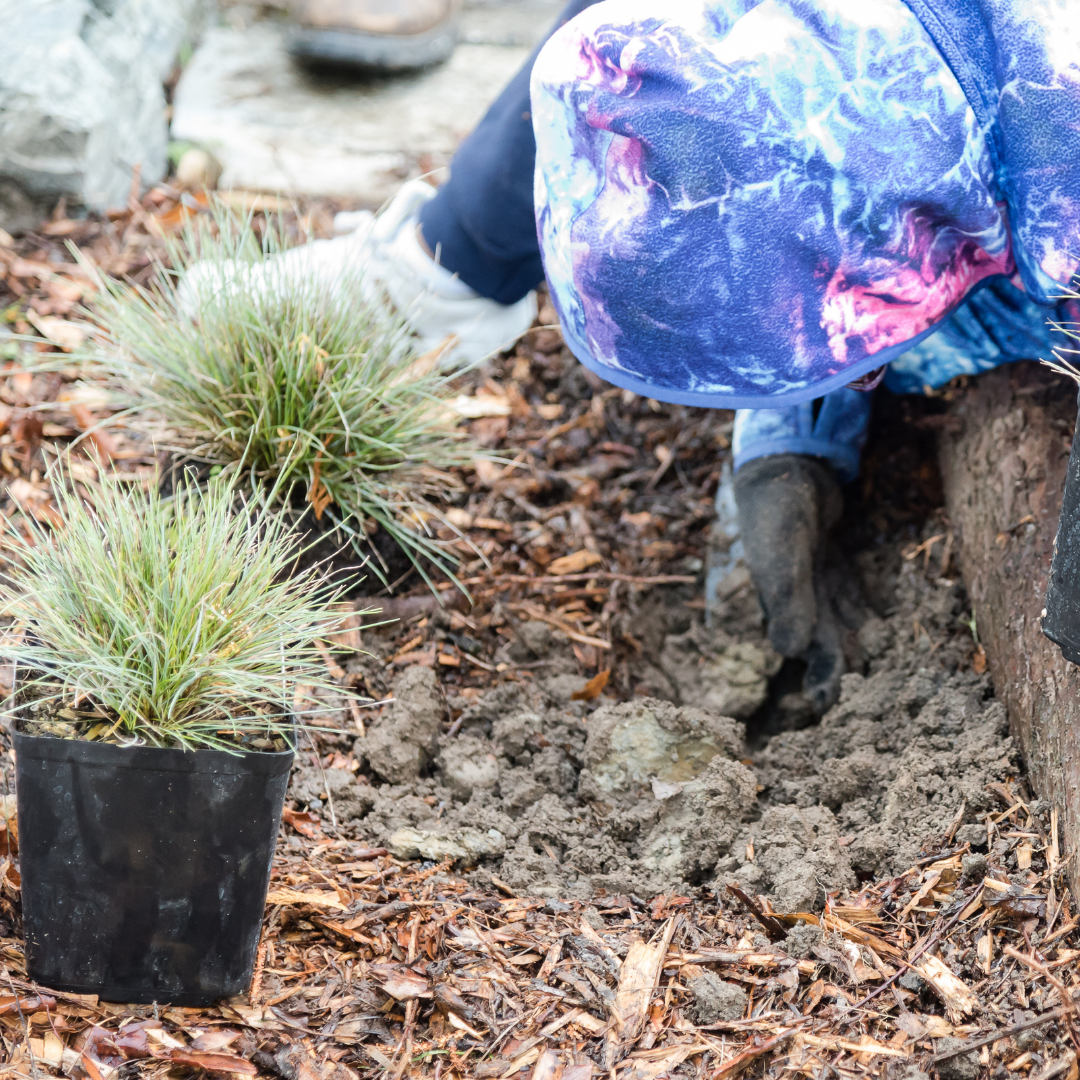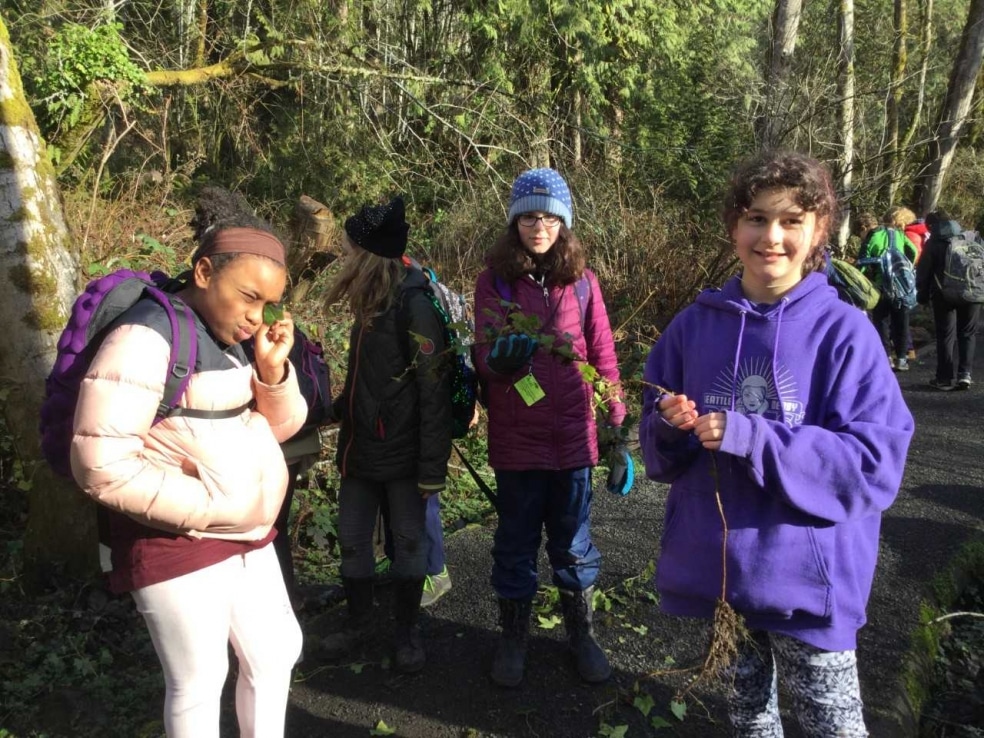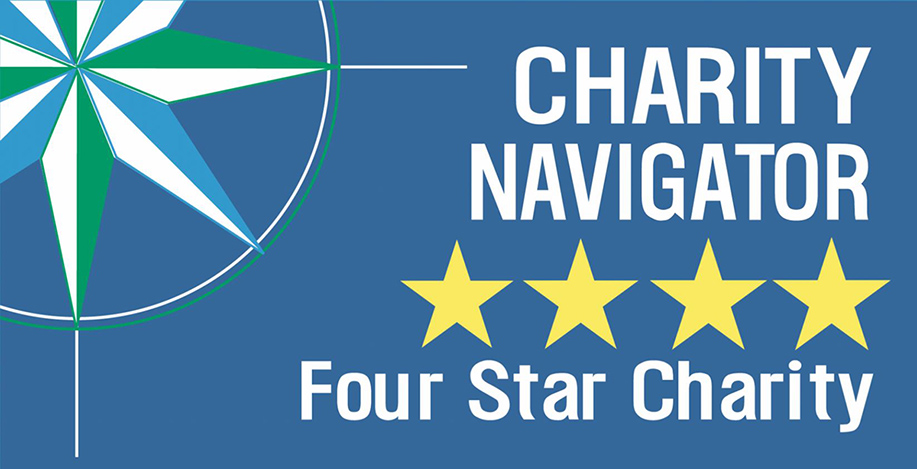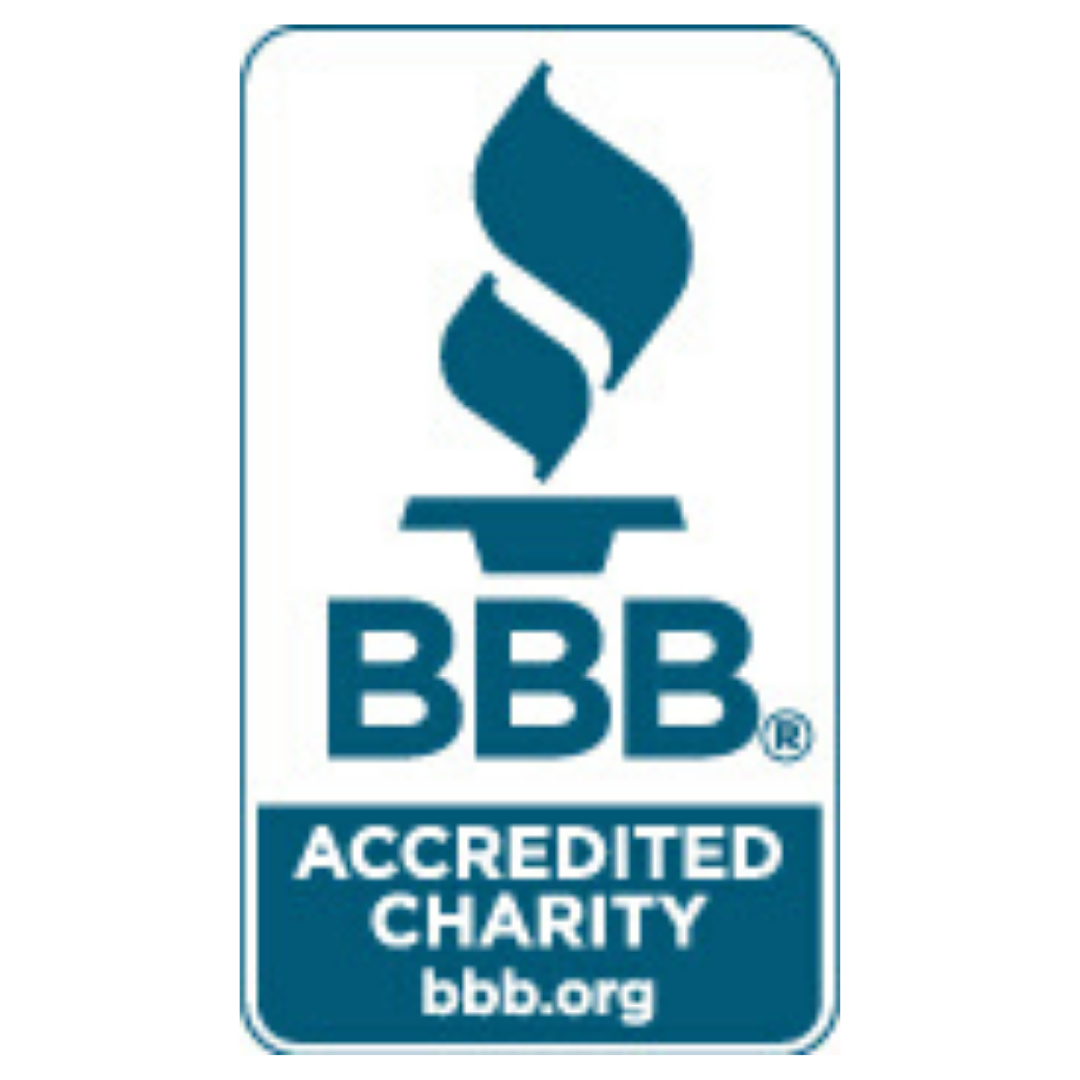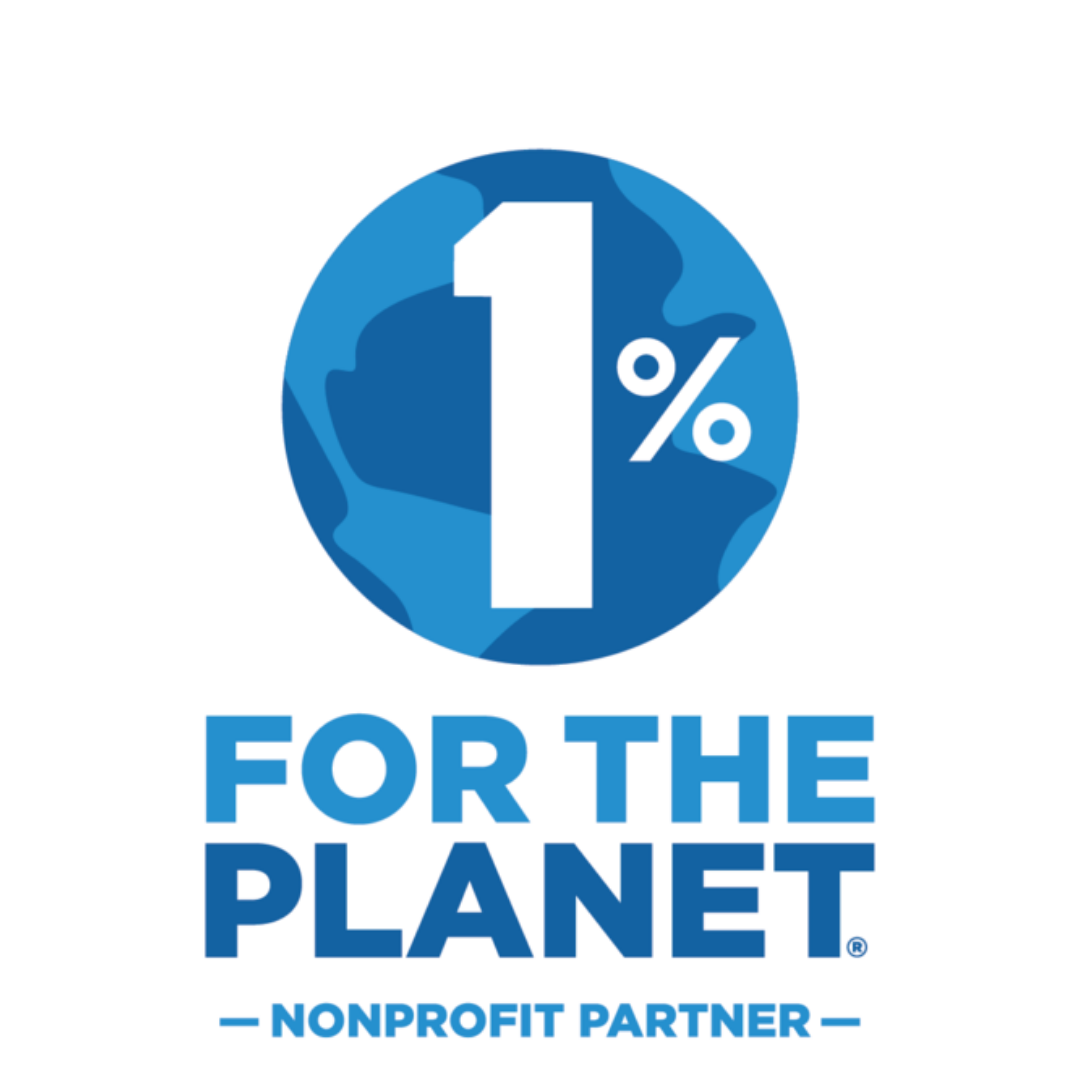IslandWood graduate students were featured in this recent Seattle Times article about House Bill 2078
Author: Mónica Mesquita
This week one of our School Overnight Program (SOP) instructors, Sylvan, asked his team, “Who do you think takes care of the garden?”
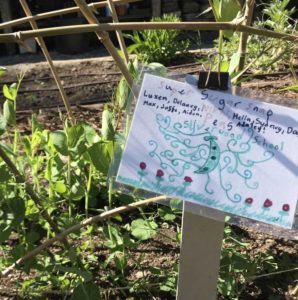
A sugar snap pea sign in the garden.
The students’ eyes quickly began to search the garden for me and Jen, the garden educators. With their quick assumption that the garden was likely cared for by the adults who work there the team created a great opportunity for Sylvan to introduce that the garden is cared for by both us and all of the young people that spend time in this space. He continued to share that as all other teams have stewarded this garden before them, they too would participate in this practice by planting seeds.
Most of our vegetables and flowers are planted by young people just like those in Sylvan’s team. Part of the planting process in the IslandWood garden is designing a sign that includes the plant name, date, school name, student signatures, and if time allows, some artwork. We call them stewardship signs.
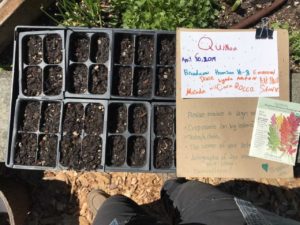
A quinoa sign in the garden next to quinoa starts.
They can be found all around the garden, right next to the plants they are connected to. Their beauty lies in how they make visible a seemingly invisible act of stewardship. When students notice a stewardship sign next to the plant they are harvesting, they are made aware that students before them planted something for them to enjoy. When they create a sign as part of their planting project, they realize that while they will not personally benefit from planting these seeds, others will—there is no immediate gratification from this act of stewardship, but hopefully deep satisfaction nonetheless. These special signs connect students currently visiting the garden to those who came before and those who will come after.
My hope is that through their interactions with these signs they can begin to see these acts of stewardship even when the signs are gone, that young people will act knowing that they will not enjoy the outcome, but that others will—in a few months, years, or even generations.
Let us practice how to spot the acts of stewardship sprinkled all around us and inform ours with future generations in mind.

